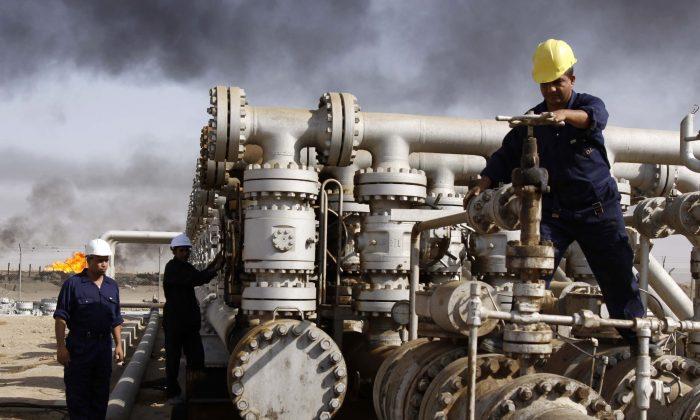As the price of oil hit rock bottom at $49.69 at the wellhead in the Bakken shale region in North Dakota, the consequences for producers and consumers alike could be dire.
First, let’s recap why oil at the wellhead in North Dakota is a third cheaper than the $70 paid for Brent crude on the global futures market: It’s hard to leave North Dakota.
According to Bloomberg, the Bakken formation produces 1.12 million barrels a day but only has the estimated capacity to ship out 773,000 at the end of this year. Add to this the fact that shipping is more expensive by rail than by tanker or pipeline, and you get the picture.
However, companies desperate to get their oil out will charge less in order to sell it.
And desperate they are. Shale oil producers are up to their necks in debt and need cash flow in order to service their debt and already-committed capital expenditures.
During good times, they used a higher oil price and more revenue to increase investments in order to ramp up production. This follows the classical economic market equilibrium model where a rising price leads to more supply.
However, during bad times and a sinking price, the model breaks, at least in the short term. Because drillers are already committed to certain projects and have to service their debts, they are increasing production to meet a revenue shortfall, not decreasing it, as the model dictates under a falling price.
OPEC is just the same, as poorer countries such as Venezuela and Iran have to make their social welfare payments, which are mostly funded by the sale of oil.
So once the price started dropping because of an increase in supply and a decrease in demand from China, as well as increased energy efficiency in the West, the initial drop was met by more production, which led to an even steeper decline in price.
Model Fix
So consumers get to enjoy cheap gas for a while, which is certainly a boon for the economy as more discretionary income becomes available to use for other things.
However, in the long term, the classic equilibrium model kicks in again and will most definitely lead to even higher oil prices, even if demand stays the same.
At prices like these, a significant number of shale producers and other marginal players, such as ultra-deep water and oil sands, will go bankrupt. Most shale players need an oil price of $65 to break even, and some of them need significantly more.
In addition, even if bigger and sounder companies don’t go bankrupt, they will defer or cancel more costly projects, leading to a significant reduction in supply not far down the road.
Once cheap oil, which is profitable at cheap prices, runs out—and it will run out sooner rather than later—the world will demand all those barrels that were scrapped at current prices and will pay a much higher price for them.






Friends Read Free